Cats
Cats With Round Ears – Do They Actually Exist? Find Out!
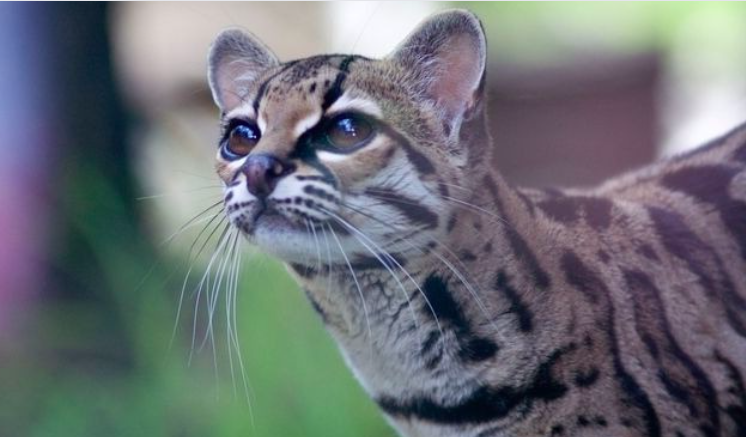
Cats With Round Ears – Do They Actually Exist?
When we think of cats, the image that often comes to mind includes pointy, triangular ears perched atop their heads. However, some feline enthusiasts and pet owners might be surprised to learn that not all cats fit this mold.
Cats with round ears do exist and are cherished for their unique and charming appearance. These distinctive ear shapes are not just a whimsical trait but are often associated with specific breeds, each with its own fascinating history and personality.
In this article, we explore the world of round-eared cats, delving into the breeds that possess this adorable feature, the genetics behind their ear shape, and what makes these cats so special. Join us as we unravel the mysteries of these captivating felines and discover why round-eared cats have captured the hearts of many.
Cat Breeds With Round Ears
While most cats sport the familiar pointed ear shape, there are a few unique breeds that feature endearingly round ears. These distinctive ear shapes add to their charm and make them stand out in the feline world. Here are some cat breeds known for their round ears:
1. Scottish Fold
The Scottish Fold is perhaps the most well-known breed with round ears. This breed’s ears fold forward and downward, giving them a distinct, rounded appearance. Scottish Folds are known for their friendly and affectionate nature, making them popular pets.
2. American Curl
The American Curl is famous for its ears that curl backward in a graceful arc. While the tips of their ears are rounded, the overall shape gives them a unique look. American Curls are playful, social, and very affectionate towards their human companions.
3. Selkirk Rex
The Selkirk Rex has a distinct curly coat and rounded ears. This breed is known for its plush, soft fur and endearing personality. Selkirk Rex cats are patient, loving, and excellent family pets.
4. Highlander
The Highlander is a newer breed that features both curled and rounded ears. Their ears are a standout trait, adding to their wild and exotic appearance. Highlanders are energetic, playful, and very interactive with their owners.
5. British Shorthair
While not as pronounced as the Scottish Fold, the British Shorthair can have slightly rounded ears that contribute to their overall teddy bear-like appearance. These cats are known for their calm demeanor and affectionate nature.
These breeds showcase the diversity in the feline world, proving that even subtle changes in features like ear shape can create entirely different and captivating looks. Whether it’s the folded ears of the Scottish Fold or the curled ears of the American Curl, these round-eared cats bring joy and fascination to cat lovers everywhere.
The Genetics Behind Round Ear Shapes in Cats
The unique ear shapes in certain cat breeds are the result of specific genetic mutations. These mutations affect the cartilage in the ear, leading to various distinctive ear shapes such as rounded, folded, or curled. Here’s a closer look at the genetics behind some of these fascinating ear shapes:
Scottish Fold
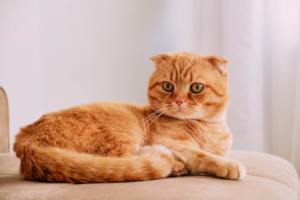
The Scottish Fold cat’s iconic ear shape is due to a dominant gene mutation known as Fd. This gene affects the cartilage throughout the cat’s body, not just in the ears. When a cat inherits one copy of this gene (heterozygous), it exhibits the characteristic forward-folding ears. However, if a cat inherits two copies of the gene (homozygous), it can lead to severe cartilage and bone abnormalities, which is why responsible breeding practices aim to avoid such pairings.
American Curl
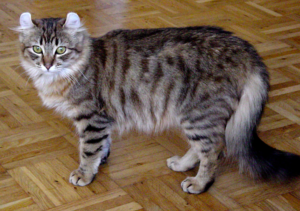
The distinctive backward-curling ears of the American Curl are caused by a dominant gene mutation known as Cu. This gene affects the cartilage in the ear, causing it to curl back in a graceful arc. The mutation does not generally affect other parts of the body, making the American Curl a relatively healthy breed with regard to their unique ear shape.
Selkirk Rex
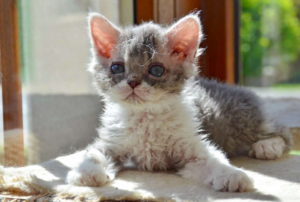
The Selkirk Rex cat’s curly coat and slightly rounded ears are due to an incomplete dominant gene mutation known as Hr. This gene affects the hair and ear cartilage, giving the Selkirk Rex its characteristic look. Unlike some other genetic mutations, the one affecting the Selkirk Rex does not cause significant health issues, making it a stable and healthy breed.
Highlander
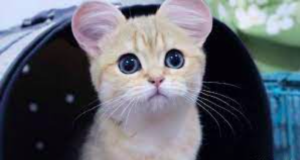
The Highlander breed’s unique ear shape results from a dominant gene mutation that causes the ears to curl backward, similar to the American Curl, but also gives them a rounded appearance. This breed’s genetic makeup includes traits from other breeds with unique ear shapes, combining them into its distinct look.
British Shorthair
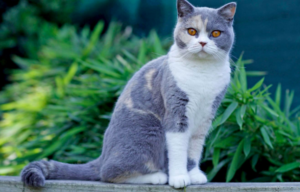
The British Shorthair does not have a specific gene mutation that causes rounded ears like the Scottish Fold or American Curl. Instead, their slightly rounded ear shape is a result of selective breeding for overall roundness in features, including their head and face, leading to a more subtle rounding of the ears.
The Role of Selective Breeding
Selective breeding plays a significant role in maintaining and enhancing these unique ear shapes. Breeders choose cats with the desired traits to parent future generations, ensuring the specific ear shapes are passed down. This practice, while effective in creating distinct breeds, must be done responsibly to avoid health issues associated with certain genetic mutations.
What Makes Cats with Round Ears So Special?
Cats with round ears hold a special place in the hearts of cat lovers around the world. Their distinctive ear shapes, combined with their unique personalities and appearances, set them apart from other feline breeds. Here’s an in-depth look at what makes these cats so special:
1. Unique Aesthetic Appeal
One of the most immediate and striking features of cats with round ears is their unique aesthetic appeal. The unusual ear shapes contribute to a distinctive look that is both charming and endearing. Breeds like the Scottish Fold, American Curl, and Highlander have an unmistakable appearance that makes them stand out in the world of cats.
2. Playful and Affectionate Personalities
Many of these breeds are known for their playful and affectionate personalities. For example, Scottish Folds are renowned for their sweet and gentle nature, often forming strong bonds with their human families. Similarly, American Curls are curious, friendly, and love to engage in interactive play. Their unique ear shapes seem to be matched by equally unique and lovable temperaments.
3. Fascinating Genetics
The genetics behind their distinctive ear shapes add an element of scientific intrigue. Understanding the specific mutations that cause these traits can be fascinating for both breeders and cat enthusiasts. These genetic differences not only contribute to their appearance but also to their overall health and breed characteristics.
4. Rich History and Cultural Significance
Some of these breeds, such as the Scottish Fold, have rich histories and cultural significance. Discovered in Scotland in the 1960s, the Scottish Fold has since become a beloved breed worldwide. Their unique look has even made them popular in pop culture and among celebrities, further enhancing their special status.
5. Rarity and Exclusivity
Certain breeds with unique ear shapes are relatively rare, making them highly sought after by cat lovers and breeders. For example, the Highlander and Selkirk Rex are not as commonly found as other breeds, adding to their exclusivity and appeal. Owning one of these cats can feel like having a special and rare treasure.
6. Gentle and Adaptable Nature
Many of these breeds are known for their gentle and adaptable nature. British Shorthairs, for instance, are calm, easygoing, and adapt well to various living environments, including apartments and homes with children. Their well-rounded personalities make them ideal companions for a wide range of cat owners.
7. Hypoallergenic Qualities
Certain breeds like the Selkirk Rex are often touted as being more hypoallergenic than others, due to their unique coat texture. While no cat is completely hypoallergenic, breeds with less shedding or different fur types can be a better choice for allergy sufferers, adding to their special qualities.
8. Strong Bond with Owners
Cats with unique ear shapes often develop strong bonds with their owners. The affectionate and loyal nature of breeds like the Scottish Fold and American Curl means they enjoy close companionship and are often seen following their owners around the house or curling up in their laps.
9. Distinctive Voices and Communication
Some of these breeds also have distinctive voices and ways of communicating. For instance, Scottish Folds are known for their soft, sweet voices and often use a range of sounds to express themselves, making them particularly engaging pets.
10. Therapeutic Companionship
The special nature of these cats often provides therapeutic companionship to their owners. Their unique appearances and loving personalities can offer emotional support, reduce stress, and enhance the overall well-being of their human companions.
Conclusion
The genetics behind the unique ear shapes in these cat breeds highlight the fascinating complexity of feline biology. From the folded ears of the Scottish Fold to the curled ears of the American Curl, these genetic mutations not only give these cats their distinctive looks but also contribute to their charm and appeal.
Understanding the genetics helps breeders and owners appreciate the importance of responsible breeding practices to ensure the health and well-being of these unique and beloved cats.
FAQs About Cats With Round Ears
What are some cat breeds known for having round ears?
Cat breeds known for having round ears include the Scottish Fold, American Curl, and Highlander. These breeds have unique ear shapes that set them apart from other cats and are often a defining feature of their appearance.
Are round-eared cats prone to any specific health issues?
Some round-eared cat breeds, like the Scottish Fold, are prone to specific health issues related to their unique ear structure. For example, Scottish Folds can suffer from cartilage-related problems and joint issues. It’s important to monitor their health closely and consult with a veterinarian familiar with these breeds.
Do round-eared cats require special grooming?
Round-eared cats generally do not require special grooming solely due to their ear shape. However, like all cats, they benefit from regular grooming to keep their coats clean and healthy. Breeds like the American Curl may need occasional ear cleaning to prevent wax buildup.
What is the temperament of cats with round ears?
The temperament of cats with round ears varies by breed. Scottish Folds are known for their sweet and calm nature, while American Curls are playful and affectionate. It’s essential to research the specific breed to understand its personality traits better.
Are round-eared cats good with children and other pets?
Many round-eared cats, such as the American Curl and Scottish Fold, are known to be good with children and other pets. They are typically sociable and enjoy interacting with their families. However, individual personalities can vary, so it’s always a good idea to introduce new pets gradually and observe their interactions.
We appreciate you taking the time to read!
Finally, we hope you found this article interesting? And what do you think about ”Cats With Round Ears – Do They Actually Exist? Find Out!?”
Please get in touch with us if you would like to contribute to this article or advertise.
And let us know if you notice something that isn’t quite right.

Cats
Clever Cats: Breeds That Learn Fast
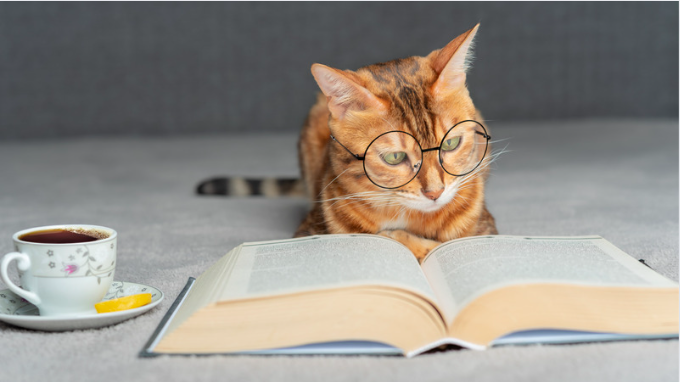
Clever Cats: Breeds That Learn Fast
Cats have always fascinated us with their agility, independence, and sometimes enigmatic behavior. Among the vast array of feline breeds, some stand out for their remarkable intelligence and ability to learn quickly.
In this article, we will delve into the world of these exceptional cat breeds, exploring their unique characteristics, training capabilities, and what makes them such quick learners.
Whether you’re a seasoned cat owner or considering adopting a new feline friend, this comprehensive guide will help you understand the breeds that are not only intelligent but also a joy to train.
Why Intelligence Matters in Cats
Understanding Feline Intelligence
Feline intelligence is a multi-faceted trait that encompasses problem-solving abilities, social learning, and adaptability. Unlike dogs, cats often showcase their intelligence in more subtle ways, such as manipulating objects to get what they want or learning routines and commands.
Benefits of Owning Intelligent Cats
Owning an intelligent cat comes with several benefits. These cats are more interactive and engaging, making them excellent companions. They can learn tricks, follow commands, and even understand basic household rules, which makes living with them more enjoyable and less challenging.
Top Cat Breeds Known for Their Intelligence
Abyssinian
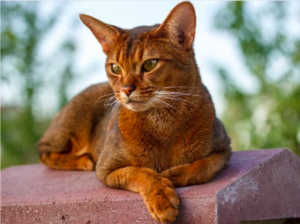
Overview
The Abyssinian is often hailed as one of the smartest cat breeds. Known for their curiosity and playful nature, Abyssinians are quick learners who thrive on mental stimulation.
Training and Activities
Abyssinians are highly trainable and enjoy interactive toys and puzzle feeders. They can learn tricks such as fetching and even walking on a leash. Their love for heights means they appreciate cat trees and climbing structures.
Siamese
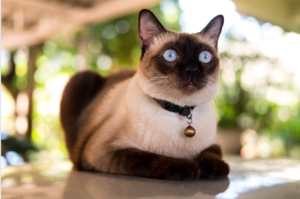
Overview
Siamese cats are not only intelligent but also highly vocal and sociable. They form strong bonds with their owners and are always eager to engage in activities.
Training and Activities
Siamese cats are quick to learn tricks and commands. They enjoy interactive play and can be trained to perform simple tasks like opening doors or retrieving items. Their vocal nature also makes them responsive to verbal cues.
Bengal
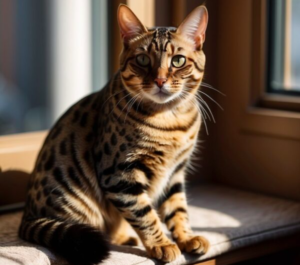
Overview
Bengals are known for their striking appearance and high energy levels. Their intelligence is reflected in their ability to solve problems and learn complex tasks.
Training and Activities
Bengals enjoy activities that challenge their minds, such as agility courses and puzzle toys. They can be trained to walk on a leash and perform tricks. Providing them with interactive playtime helps in channeling their energy positively.
Burmese
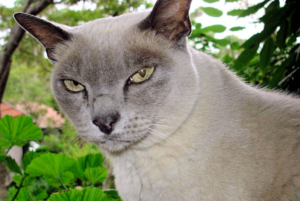
Overview
Burmese cats are affectionate, people-oriented, and intelligent. They enjoy being involved in family activities and can be trained to follow various commands.
Training and Activities
Burmese cats are quick learners and respond well to positive reinforcement. They enjoy learning tricks, playing fetch, and interactive games that stimulate their minds.
Scottish Fold
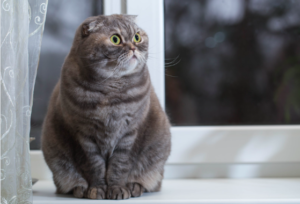
Overview
Scottish Folds are known for their distinctive folded ears and sweet demeanor. Despite their calm appearance, they are intelligent and can learn quickly.
Training and Activities
Scottish Folds enjoy interactive toys and games. They can learn tricks and commands and appreciate routines that keep their minds engaged.
Training Tips for Intelligent Cats
Start Early
Begin training your cat as early as possible. Kittens are more receptive to learning new behaviors and routines.
Use Positive Reinforcement
Reward your cat with treats, praise, or playtime whenever they successfully perform a desired behavior. Positive reinforcement strengthens the association between the action and the reward.
Keep Sessions Short and Fun
Cats have shorter attention spans than dogs, so keep training sessions brief and enjoyable. Incorporate playtime to make learning fun for your cat.
Be Patient and Consistent
Patience and consistency are key when training cats. Repeat commands and routines regularly, and avoid punishing your cat for mistakes. Consistency helps reinforce learning and builds trust.
Challenges of Training Intelligent Cats
Independence and Stubbornness
Intelligent cats can sometimes be independent and stubborn. They might choose to ignore commands if they are not in the mood, so it’s important to understand their behavior and work with it.
Need for Mental Stimulation
Highly intelligent cats require constant mental stimulation. Boredom can lead to behavioral issues, so ensure they have plenty of toys, activities, and interaction to keep their minds engaged.
Managing High Energy Levels
Breeds like Bengals have high energy levels that need to be managed. Providing them with enough physical and mental exercise is crucial to prevent destructive behavior.
Living with Intelligent Cats
Creating an Enriched Environment
An enriched environment is essential for intelligent cats. This includes a variety of toys, climbing structures, scratching posts, and interactive feeders to keep them stimulated.
Social Interaction
Intelligent cats thrive on social interaction. Spend quality time playing, training, and simply bonding with your cat to ensure they feel valued and engaged.
Understanding Their Needs
Each intelligent breed has its own unique needs and preferences. Understanding these and catering to them will help you build a strong and positive relationship with your cat.
Conclusion
Owning an intelligent cat can be an incredibly rewarding experience. These quick learners bring joy, challenge, and companionship to their owners. By understanding their unique characteristics and providing the right environment and training, you can foster a deep and fulfilling relationship with your feline friend.
Whether you choose an Abyssinian, Siamese, Bengal, Burmese, or Scottish Fold, you’re sure to enjoy the remarkable intelligence and personality they bring into your home.
Frequently Asked Questions (FAQs)
What makes a cat breed intelligent?
Intelligent cat breeds often show high levels of problem-solving abilities, adaptability, and social learning. They can quickly learn commands, tricks, and routines.
Can all cats be trained?
While some breeds are more receptive to training than others, all cats can be trained to some extent. Patience, consistency, and positive reinforcement are key to successful training.
What are the best toys for intelligent cats?
Interactive toys, puzzle feeders, and climbing structures are ideal for intelligent cats. These toys provide mental stimulation and keep them engaged.
How do I keep my intelligent cat from getting bored?
Provide a variety of toys, engage in regular playtime, and introduce new activities regularly. Rotating toys and creating an enriched environment also help prevent boredom.
Are intelligent cats more difficult to care for?
Intelligent cats can be more demanding in terms of mental stimulation and interaction. However, with the right approach and environment, they can be delightful companions.
We appreciate you for taking the time to read this article!
Finally, we hope you found this article interesting? And what do you think about ”Clever Cats: Breeds That Learn Fast!?”
Please feel free to share or inform your friends about this article and this site, thanks!
And let us know if you observe something that isn’t quite right.
Cats
The Enchanting Scottish Fold: A Guide to the Adorable Feline with Folded Ears
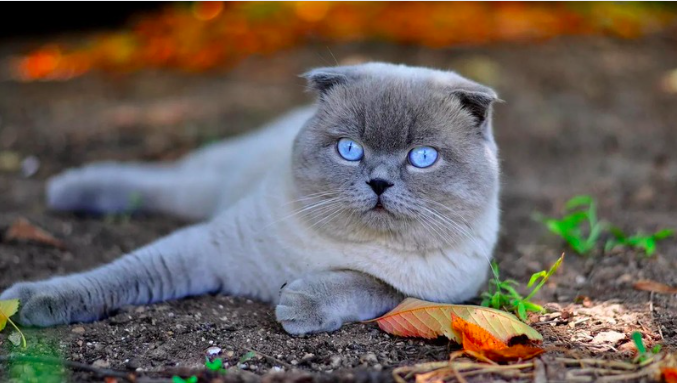
The Enchanting Scottish Fold: A Guide to the Adorable Feline with Folded Ears
Welcome to the world of the Scottish Fold cat, where charm and curiosity meet in an irresistibly adorable package. With their distinctive folded ears and sweet expression, Scottish Folds have captured the hearts of cat lovers around the world. Originally hailing from Scotland, these cats are known for their gentle demeanor, playful nature, and loving personality.
In this comprehensive guide, we will delve into the fascinating world of Scottish Fold cats, exploring their history, physical characteristics, personality traits, and care requirements. Whether you’re a seasoned cat owner or considering adding a feline friend to your family, the Scottish Fold’s unique charm and affectionate nature make them a delightful addition to any home. Join us as we unravel the enchanting tale of the Scottish Fold cat and discover why they are such beloved companions.
Fold
Overview
The Scottish Fold cat is a charming and distinctive breed known for its unique folded ears and sweet expression. Originating from Scotland in the 1960s, these cats have captured the hearts of many with their endearing appearance and affectionate nature. Scottish Folds are known for their gentle and loving temperament, making them wonderful companions for families and individuals alike.
History and Origins
The Scottish Fold breed traces its roots back to a white barn cat named Susie, who was found in Scotland in the early 1960s. Susie had a unique genetic mutation that caused her ears to fold forward, giving her an owl-like appearance. This trait was passed down to her kittens, and thus, the Scottish Fold breed was born. The breed quickly gained popularity for its distinctive look and friendly demeanor, and it was officially recognized by cat registries in the 1970s.
Physical Characteristics
- Folded Ears: The most distinctive feature of the Scottish Fold is its folded ears, which give the cat a sweet and owl-like appearance. Not all Scottish Folds have folded ears; some may have straight ears, known as “straights,” which are also common in the breed.
- Coat and Colors: Scottish Folds can have either a short or long coat, both of which are dense and plush. They come in a variety of colors and patterns, including tabby, tortoiseshell, and solid colors like white, black, and blue.
- Body Structure: Scottish Folds are medium-sized cats with a rounded appearance. They have sturdy bodies, round faces, and large, expressive eyes that give them a sweet and gentle expression.
Personality and Behavior
Scottish Folds are known for their calm and laid-back demeanor. They are affectionate cats that enjoy being around people and are often described as “lap cats” due to their love of cuddling. They are also known for their playful nature and enjoy interactive toys and games. Scottish Folds are generally good with children and other pets, making them a great choice for families.

Health and Care
- Ear Care: Due to their folded ears, Scottish Folds may be prone to ear infections. It’s important to regularly check and clean their ears to prevent issues.
- Grooming: Scottish Folds have dense coats that require regular grooming to prevent matting and tangling. Weekly brushing is usually sufficient to keep their coat in good condition.
- Health Concerns: Scottish Folds are generally healthy, but they may be prone to certain genetic conditions, including a skeletal disorder known as osteochondrodysplasia. Responsible breeding practices can help minimize the risk of these health issues.
Training and Activities
Scottish Folds are intelligent cats that can be trained to perform tricks and commands. They enjoy interactive play and benefit from toys that stimulate their minds and bodies. Providing them with scratching posts and other outlets for their natural behaviors can help keep them happy and healthy.
Compatibility with Families and Other Pets
Scottish Folds are known for their gentle and affectionate nature, making them great companions for families. They are good with children and other pets, including dogs, and can adapt well to different environments. Their loving and sociable nature makes them a popular choice for households looking for a friendly and affectionate pet.
Conclusion
The Scottish Fold cat is a unique and charming breed known for its folded ears and sweet expression. With their gentle demeanor and affectionate nature, Scottish Folds make wonderful companions for families and individuals alike. Whether you’re looking for a lap cat to cuddle with or a playful friend to keep you entertained, the Scottish Fold cat is sure to bring joy and companionship to your home.
FAQs about Scottish Fold Cats
Why do Scottish Folds have folded ears?
Scottish Folds have a genetic mutation that affects the cartilage in their ears, causing them to fold forward. This unique trait gives them their distinctive appearance.
Are Scottish Folds prone to ear problems due to their folded ears?
Yes, Scottish Folds may be more prone to ear infections due to the fold in their ears, which can trap dirt and moisture. Regular cleaning and monitoring of their ears can help prevent issues.
Do Scottish Folds have any health issues associated with their folded ears?
Scottish Folds may be prone to a condition called osteochondrodysplasia, which affects the development of their cartilage and bones. Responsible breeding practices can help reduce the risk of this condition.
Are Scottish Folds good with children and other pets?
Scottish Folds are known for their gentle and friendly nature, making them good companions for families with children and other pets. They enjoy socializing and being part of the family.
Do Scottish Folds require a lot of grooming?
Scottish Folds have dense coats that require regular grooming to prevent matting and tangles. Weekly brushing is recommended to keep their coat in good condition.
We appreciate you for taking the time to read this article!
Finally, we hope you found this article interesting? And what do you think about ”The Enchanting Scottish Fold: A Guide to the Adorable Feline with Folded Ears!?”
Please feel free to share or inform your friends about this article and this site, thanks!
And let us know if you observe something that isn’t quite right.
Cats
The Enchanting Burmese Cat: Affectionate, Playful, and Loyal
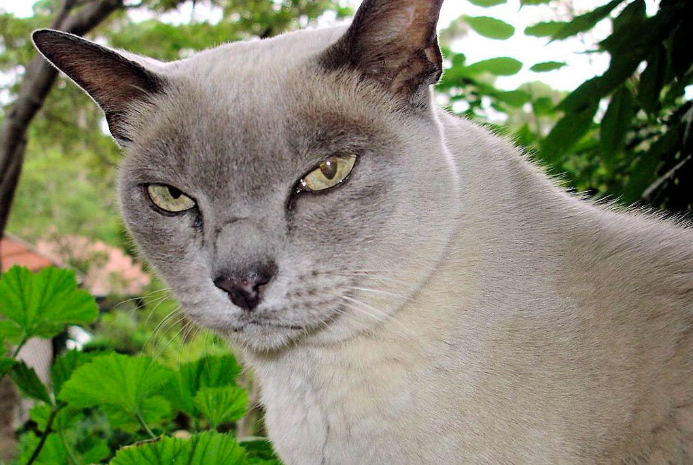
The Enchanting Burmese Cat: Affectionate, Playful, and Loyal
Enter the world of the Burmese cat, where elegance meets affection in a charming feline companion. Originating from the temples of Burma, these cats have captured the hearts of cat lovers worldwide with their striking appearance and loving nature. With their sleek coats, expressive eyes, and playful demeanor, Burmese cats are not just pets; they are cherished members of the family.
In this comprehensive guide, we delve into the captivating world of Burmese cats, exploring their history, physical characteristics, personality traits, and care requirements. Whether you’re a seasoned cat owner or considering adding a feline friend to your family, the Burmese cat’s unique blend of beauty, intelligence, and affection is sure to captivate you. Join us as we unravel the enchanting tale of the Burmese cat and discover why they are such beloved companions.
Burmese
Overview
The Burmese cat is a breed known for its striking appearance and affectionate nature. Originating from Burma (now Myanmar), these cats are renowned for their sleek, muscular bodies, expressive eyes, and silky coats. Burmese cats are often described as “people-oriented,” as they form strong bonds with their human companions and enjoy being part of the family. Their playful and curious nature makes them delightful companions for both children and adults alike.
History and Origins
The history of the Burmese cat can be traced back to ancient Burma, where they were considered sacred and kept by monks in temples. They were later brought to the West in the early 20th century and quickly gained popularity for their striking appearance and affectionate personality. The breed has since become a favorite among cat enthusiasts worldwide, known for its loving and loyal nature.
Physical Characteristics
- Coat and Colors: Burmese cats have short, sleek coats that lie close to the body. They come in a variety of colors, including sable, champagne, blue, and platinum. The coat is soft and silky to the touch, adding to the breed’s overall charm.
- Body Structure: Burmese cats are medium-sized with a muscular build. They have rounded heads, large, expressive eyes, and short, straight noses. Their compact bodies give them a sturdy appearance, and they move with grace and agility.
- Eyes and Ears: Their eyes are one of their most striking features, being large, expressive, and usually a deep, rich color that complements their coat. Their ears are medium-sized, slightly rounded at the tips, and set wide apart on the head.
Personality and Behavior
Burmese cats are known for their affectionate and sociable nature. They are often described as “dog-like” due to their tendency to follow their owners around the house and seek out human companionship. They are also highly intelligent and enjoy interactive play, making them great companions for families with children or other pets.
In addition to their affectionate nature, Burmese cats are also known for their vocalizations. They have a soft, sweet voice that they use to communicate with their owners, often engaging in “conversations” and expressing their needs and desires.

Health and Care
- Grooming: Burmese cats have short coats that require minimal grooming. Weekly brushing is usually sufficient to remove loose hair and keep their coat shiny. They also benefit from regular dental care to prevent oral health issues.
- Diet: A high-quality, balanced diet is essential for maintaining the health and vitality of Burmese cats. They should be fed a diet that is appropriate for their age, size, and activity level to ensure they receive the nutrients they need.
- Health Concerns: Burmese cats are generally healthy, but they can be prone to certain genetic conditions such as hypertrophic cardiomyopathy (HCM) and diabetes. Regular veterinary check-ups and a healthy diet can help manage these risks.
Training and Activities
Burmese cats are intelligent and can be trained to perform various tricks and commands. They enjoy interactive play and thrive on mental stimulation. Providing them with toys, puzzle feeders, and opportunities for play can help keep them entertained and prevent boredom.
Compatibility with Families and Other Pets
Burmese cats are known for their loving and social nature, making them great companions for families. They get along well with children and other pets, including dogs, as long as they are properly introduced. Their affectionate demeanor and playful nature make them a popular choice for households looking for a friendly and engaging pet.
Conclusion
The Burmese cat is a breed beloved for its affectionate nature, striking appearance, and playful personality. Whether you are looking for a loyal companion or a playful friend, the Burmese cat is sure to bring joy and warmth to your home. With their loving nature and sociable demeanor, Burmese cats make wonderful pets for families and individuals alike, enriching their lives with their presence and affection.
FAQs about Burmese Cats
What is the temperament of a Burmese cat like?
Burmese cats are known for their affectionate and social nature. They are often described as “dog-like” due to their loyalty and tendency to follow their owners around the house. They enjoy being involved in family activities and form strong bonds with their human companions.
Are Burmese cats good with children and other pets?
Yes, Burmese cats are generally good with children and other pets. They are playful and enjoy interactive play, making them great companions for families with children. They also get along well with other pets, including dogs, especially if they are introduced properly.
Do Burmese cats require a lot of grooming?
Burmese cats have short, sleek coats that require minimal grooming. Weekly brushing is usually sufficient to remove loose hair and keep their coat shiny. They also benefit from regular dental care to prevent oral health issues.
Are Burmese cats vocal?
Burmese cats are known for their soft, sweet voice, but they are not excessively vocal. They use their voice to communicate with their owners, often engaging in “conversations” and expressing their needs and desires.
What kind of environment is best for a Burmese cat?
Burmese cats thrive in environments where they have plenty of opportunities for play and interaction. They enjoy being part of the family and should have access to toys, scratching posts, and other enrichment activities. They also enjoy having access to outdoor enclosures or safe outdoor spaces where they can explore and indulge their natural instincts.
We appreciate you for taking the time to read this article!
Finally, we hope you found this article interesting? And what do you think about ”The Enchanting Burmese Cat: Affectionate, Playful, and Loyal!?”
Please feel free to share or inform your friends about this article and this site, thanks!
And let us know if you observe something that isn’t quite right.
-

 Pet Care2 years ago
Pet Care2 years agoThe Best Dog Collars For 2022
-

 Dogs2 years ago
Dogs2 years agoBichon Frise: The Happy, Playful, and Cuddly Companion
-

 Trending Pet Stories1 year ago
Trending Pet Stories1 year ago2023 ‘World’s Ugliest Dog’ Winner: Scooter’s Tale of Resilience
-

 Animals2 years ago
Animals2 years agoAre There Animals Having Down Syndrome?
-

 Pets2 years ago
Pets2 years agoThe Fascinating World Of The Red Chameleon
-

 Dogs2 years ago
Dogs2 years agoTop 10 Most Popular Dog Breeds According To AKC.
-

 Dogs2 years ago
Dogs2 years ago21 Dog Breeds That Resemble Bears Or Teddy Bears!
-

 Dogs2 years ago
Dogs2 years agoEskimo Dogs from Canada – What Are They? – Find Out!






